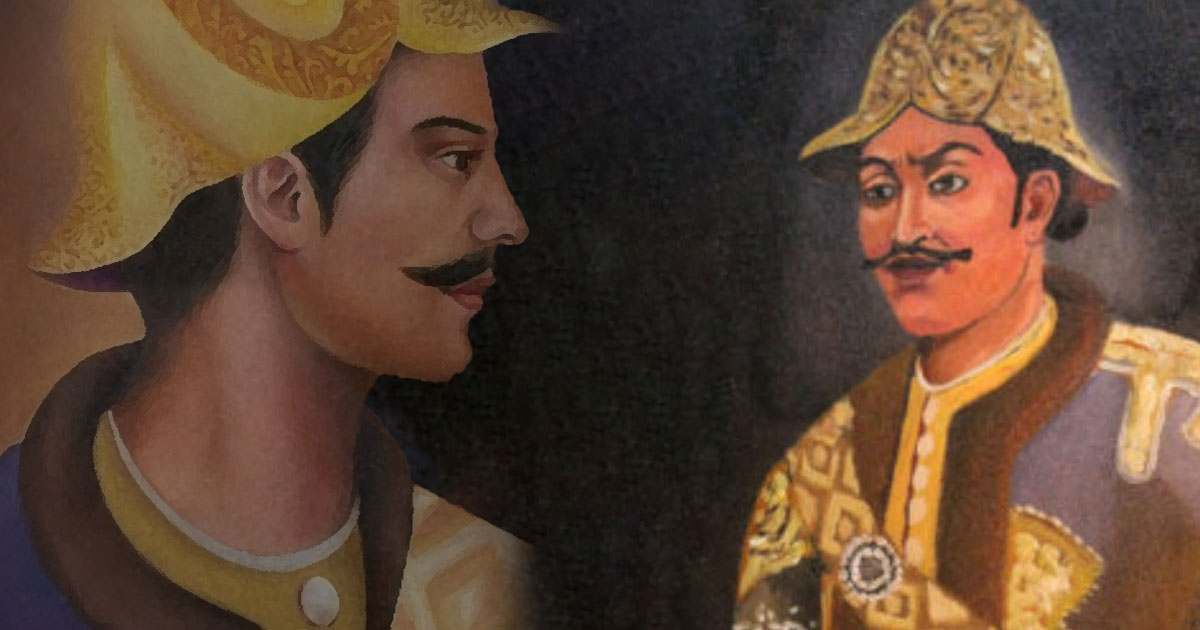

KATHMANDU: For more than three decades, Bhimsen Thapa was the architect of Nepal’s destiny—rising from a royal aide to the nation’s most powerful statesman. A military strategist, reformer, and shrewd politician, he navigated the treacherous currents of early 19th-century South Asia, clashing with the British Empire while attempting to modernize his fledgling kingdom. But power is fleeting, and the same political forces that once lifted him to prominence ultimately led to his downfall. His legacy, like the towering monuments he built, still casts a long shadow over Nepal’s history—both admired and contested, a reminder of ambition’s triumphs and tragedies.
Bhimsen Thapa, the nation’s Mukhtiyar, or Prime Minister, from 1806 to 1837. His tenure was marked by ambitious reforms, military confrontations, and a relentless pursuit of national sovereignty during a period of regional upheaval. Thapa’s legacy is a tapestry of visionary leadership interwoven with controversy, reflecting the complexities of governing a nascent nation-state in the early 19th century.
Early Life and Rise to Power
Born in August 1775 in the Gorkha district, Bhimsen Thapa hailed from a family with deep military roots. His father, Sardar Sanu Amar Singh Thapa, served in the army of Prithvi Narayan Shah, the founder of modern Nepal. This martial lineage imbued young Bhimsen with a sense of duty and an understanding of the intricacies of power.
At the tender age of 11, Bhimsen’s life took a decisive turn when he participated in the bratabandha ceremony alongside Crown Prince Rana Bahadur Shah in Gorkha. This event fostered a close bond between the two, propelling Bhimsen into the royal court’s inner circle. By 1798, he had ascended to the role of personal secretary to King Rana Bahadur Shah, a position that offered him unparalleled insight into the mechanics of governance and court politics.
Consolidation of Power
The assassination of King Rana Bahadur Shah in 1806 precipitated a power vacuum within the Nepalese court. Amidst the ensuing turmoil, Bhimsen Thapa adeptly navigated the treacherous political landscape, emerging as the Mukhtiyar. His consolidation of power was further reinforced by his familial connection to Queen Tripurasundari, the junior queen and his niece, who served as regent for the young King Girvan Yuddha Bikram Shah. This alliance fortified his position, enabling him to steer the nation through a complex web of internal and external challenges.
Territorial Ambitions and the Anglo-Nepalese War
Under Thapa’s stewardship, Nepal’s territorial ambitions reached their zenith. The nation’s borders expanded from the Sutlej River in the west to the Teesta River in the east, reflecting a period of aggressive unification and conquest. However, this expansionist zeal inevitably led to friction with the British East India Company, a burgeoning colonial power with its own designs on the subcontinent.
The simmering tensions culminated in the Anglo-Nepalese War of 1814-1816. Despite the valor displayed by Nepalese forces, the war concluded with the Treaty of Sugauli in 1816. This accord exacted a heavy toll on Nepal, ceding approximately one-third of its territory to the British. The loss was a significant blow to national pride and a stark reminder of the geopolitical realities of the era.
Reforms and Modernization
Undeterred by the setbacks of war, Bhimsen Thapa embarked on an ambitious agenda to modernize Nepal. Recognizing the imperative of a robust military, he instituted European-style training regimens, established new cantonments, and restructured the army’s hierarchy, introducing ranks such as General, Colonel, and Captain. These reforms were designed to fortify Nepal’s defenses against future incursions and to project strength within the region.
Thapa’s vision extended beyond the battlefield. He championed infrastructure projects that would lay the foundation for a more connected and resilient nation. Among his most iconic contributions was the construction of the Dharahara tower in 1832, a nine-story edifice in Kathmandu that served both as a military watchtower and a symbol of national pride. Additionally, he oversaw the development of bridges, roads, and public waterworks, including the Sundhara fountain, enhancing urban planning and public welfare.
In the realm of social reform, Thapa sought to address entrenched societal practices. He implemented measures to curb extravagant expenditures during festivals, particularly among the Newar community, and endeavored to abolish the practice of keeping servants, aiming to foster a more equitable social structure. Administrative efficiency was another cornerstone of his governance, as he took strides to centralize power, reduce corruption, and streamline the bureaucracy.
Diplomatic Endeavors and Foreign Policy
Navigating the complex geopolitical landscape of early 19th-century South Asia required astute diplomacy. Bhimsen Thapa was acutely aware of the British East India Company’s expanding influence and sought to counterbalance it by forging strategic alliances. He extended informal overtures to the Maratha Confederacy and the Sikh Empire, envisioning a coalition that could resist British encroachment. While these alliances did not materialize into a formidable bloc, they underscored Thapa’s commitment to preserving Nepalese sovereignty through regional cooperation.
Decline and Demise
The latter years of Bhimsen Thapa’s tenure were marred by political intrigue and shifting allegiances. The death of Queen Tripurasundari in 1832 deprived him of a crucial ally within the royal court. Simultaneously, King Rajendra Bikram Shah’s coming of age introduced new dynamics, as the monarch sought to assert his authority, further eroding Thapa’s influence.
Rival factions, particularly the Pande family, who harbored longstanding grievances over past political executions, seized upon this period of vulnerability. Accusations of conspiracy and misconduct culminated in Thapa’s arrest and imprisonment. Facing relentless persecution and the erosion of his political base, Bhimsen Thapa’s life came to a tragic end when he died by suicide on July 28, 1839, while still in custody.
Legacy
Bhimsen Thapa’s legacy is a study in contrasts. He is lauded for his unwavering dedication to Nepal’s sovereignty, his visionary reforms, and his efforts to modernize the nation. The infrastructural and administrative foundations he laid continued to influence Nepalese society long after his demise. Conversely, his tenure is also critiqued for authoritarian tendencies.